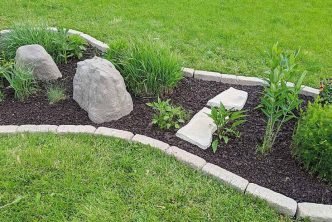Are you itching to transform your outdoor space into a lush oasis of greenery and beauty? Look no further! This comprehensive guide will provide you with essential tips for DIY landscaping that will help you create a captivating and inviting landscape without needing professional assistance. Whether you’re working with a small backyard or a vast expanse of land, this guide has got you covered. And with the help of a skid steer, you would not have any heavy lifting to do! Now, dive into this list of landscaping secrets to make your dream garden a reality.
Table of Contents
Planning Your Paradise
Before you put on your gardening gloves and grab that shovel, take a moment to plan your landscaping project. Visualize the end result and sketch out your ideas on paper. Consider factors such as sunlight exposure, soil type, and your region’s climate to select the right plants that will thrive in your garden.
Lay the Groundwork
Preparing your soil is a crucial step in DIY landscaping. Clear the area of any debris and weeds, then amend the soil with compost to improve its nutrient content and drainage. A skid steer can be very useful during this process. This will provide a solid foundation for your plants to grow strong and healthy.
Right Plant, Right Place
Selecting the appropriate plants for your garden is essential to ensure their longevity and vitality. Choose plants that are well-suited to your region’s climate and are compatible with the available sunlight in each area of your yard. Group plants with similar water and sunlight need together to make maintenance easier.
The Art of Mulching
Mulch is not just for aesthetics; it plays a vital role in maintaining soil moisture and regulating temperature. Organic mulches, like wood chips or shredded leaves, also enrich the soil as they decompose. Apply a layer of mulch around your plants to conserve water and keep weeds at bay.
Watering Wisely
Watering your plants is a balancing act. Too much water can lead to root rot, while too little will leave your plants parched. To keep your garden thriving, water deeply but infrequently. Early mornings or late evenings are the best times to water, as it minimizes water loss due to evaporation.
Embrace the Power of Perennials
Perennials are a gardener’s best friend, as they return year after year, reducing the need for replanting. These hardy plants come in various shapes, sizes, and colors, offering your landscape a long-lasting splash of beauty.
Create Stunning Hardscapes
Don’t limit your DIY landscaping to just plants. Integrate hardscaping elements like paths, patios, and garden walls to add structure and functionality to your garden. Use natural stones or pavers to create pathways that lead visitors on a delightful journey through your green sanctuary.
Go Native for Sustainability
Consider incorporating native plants into your landscape design. Native plants are adapted to your area’s conditions, making them low-maintenance and beneficial to local wildlife. By using native species, you can help preserve the natural ecosystem while enjoying a vibrant and resilient garden.
Think Vertical with Vines
If you’re short on space or want to add an eye-catching element to your garden, consider planting climbing vines. These beautiful plants can adorn walls, fences, and trellises, adding a touch of elegance and depth to your outdoor space.
The Bottom Line
Maintaining your DIY landscape doesn’t have to be overwhelming. Regularly prune your plants to encourage healthy growth and remove dead or diseased foliage. Also, watch out for pests and diseases and address them promptly to prevent further damage. By following these essential tips, you’ll be well on your way to creating a stunning and sustainable landscape that showcases your green thumb talents.





